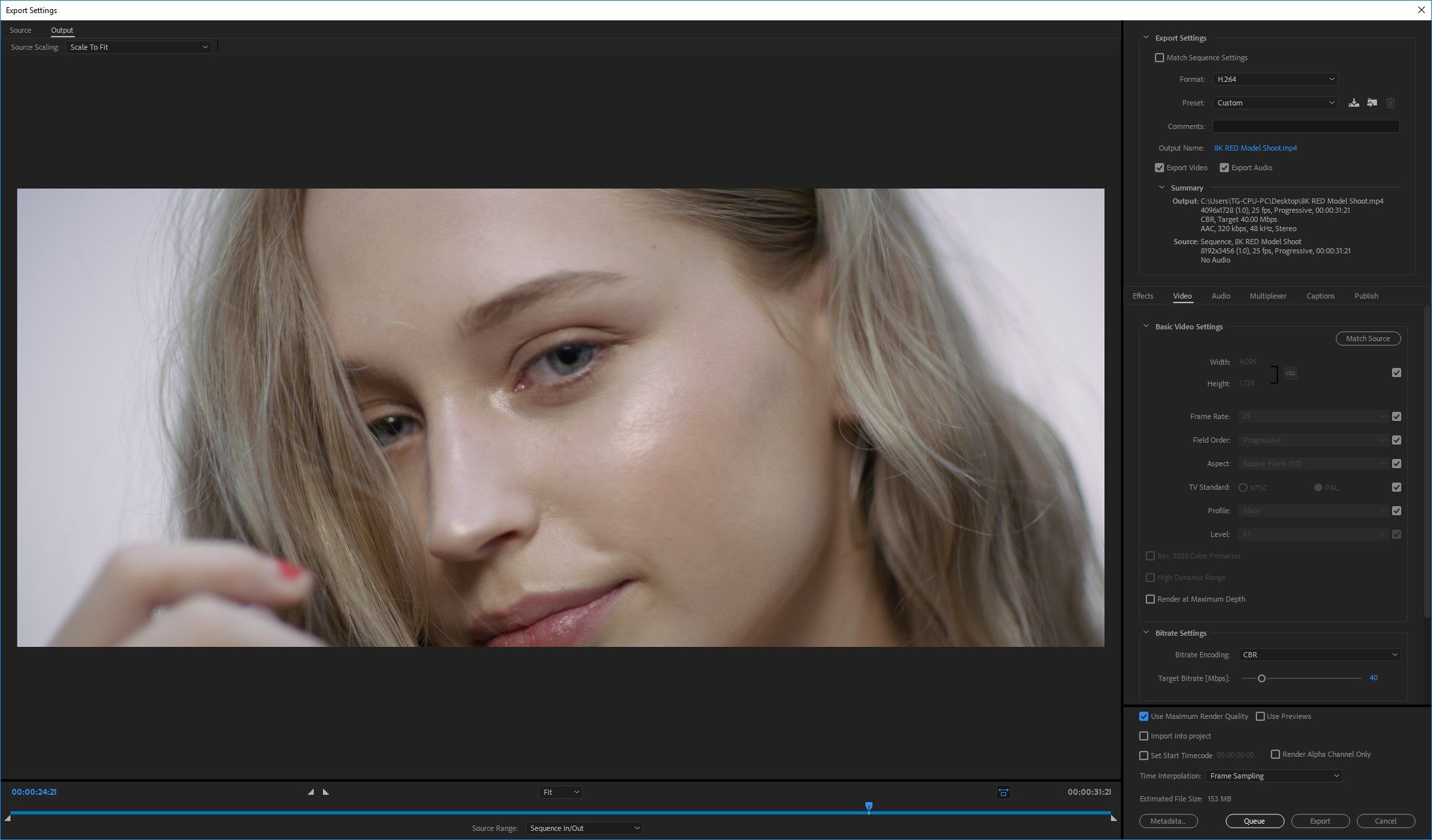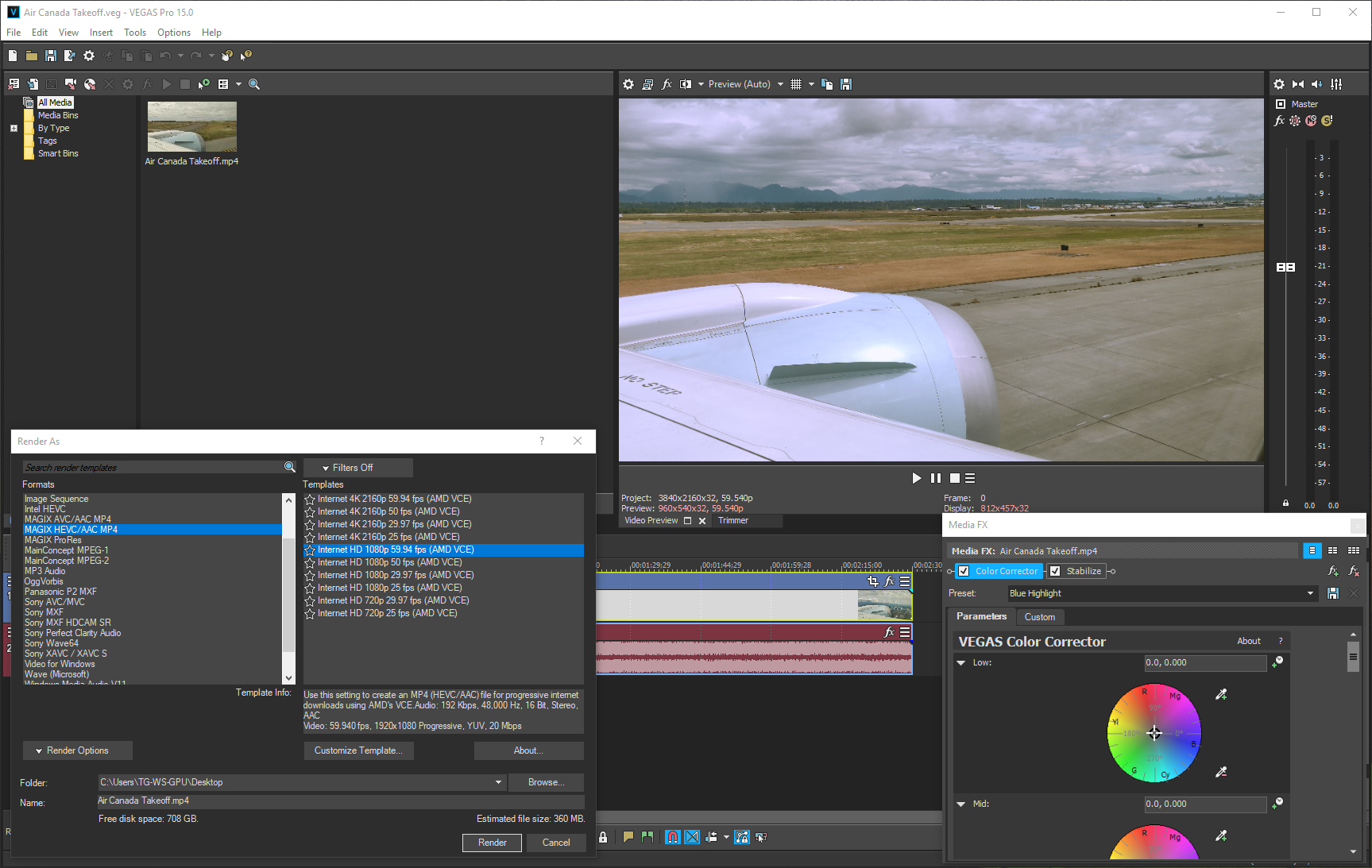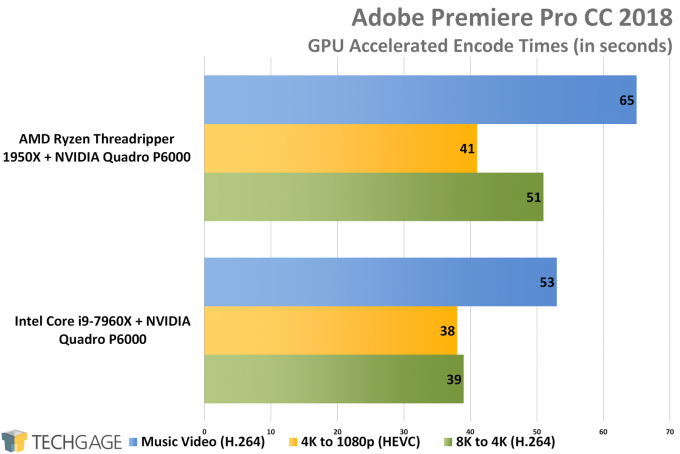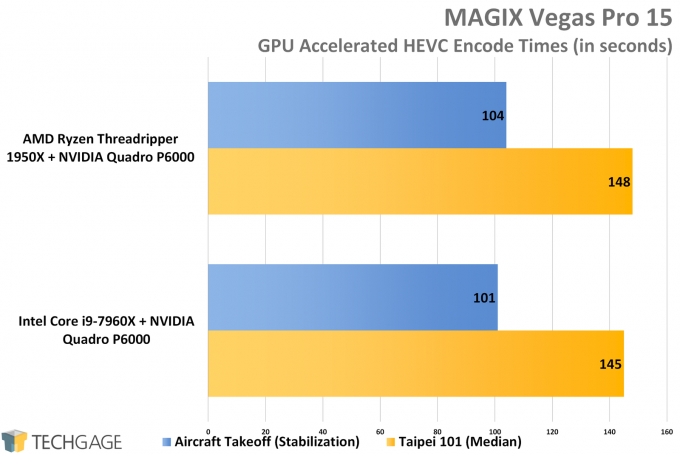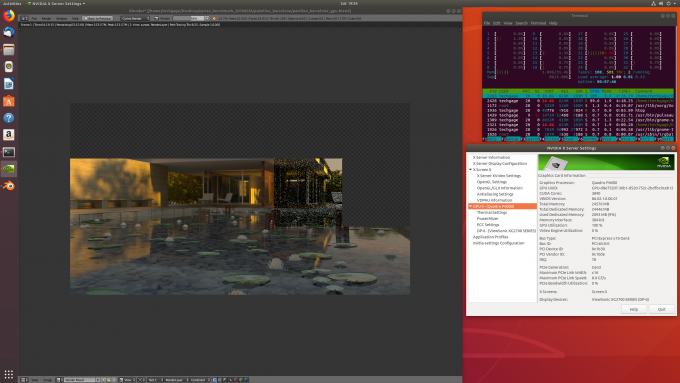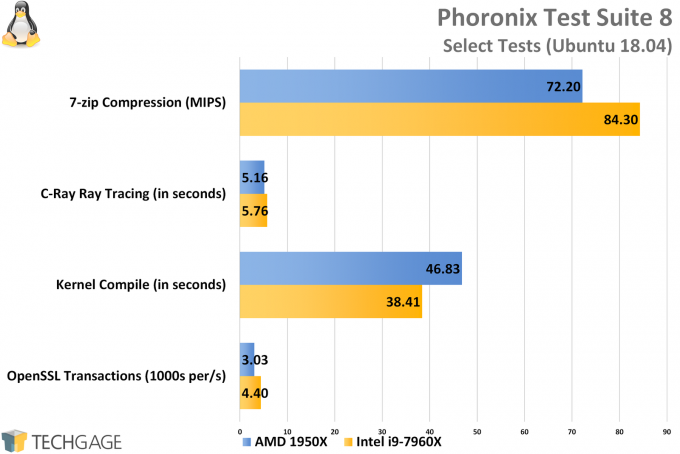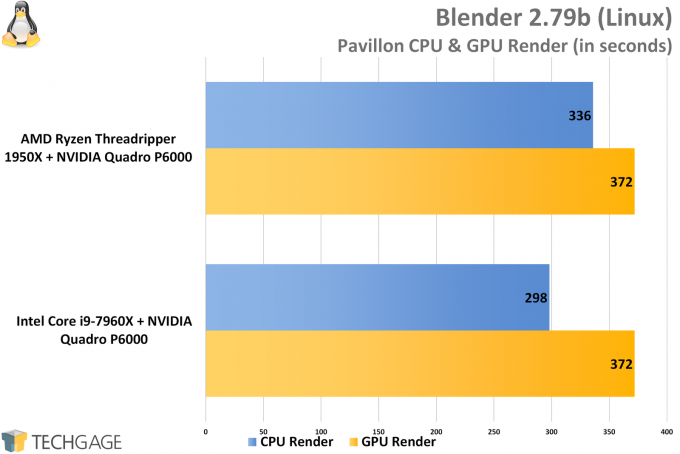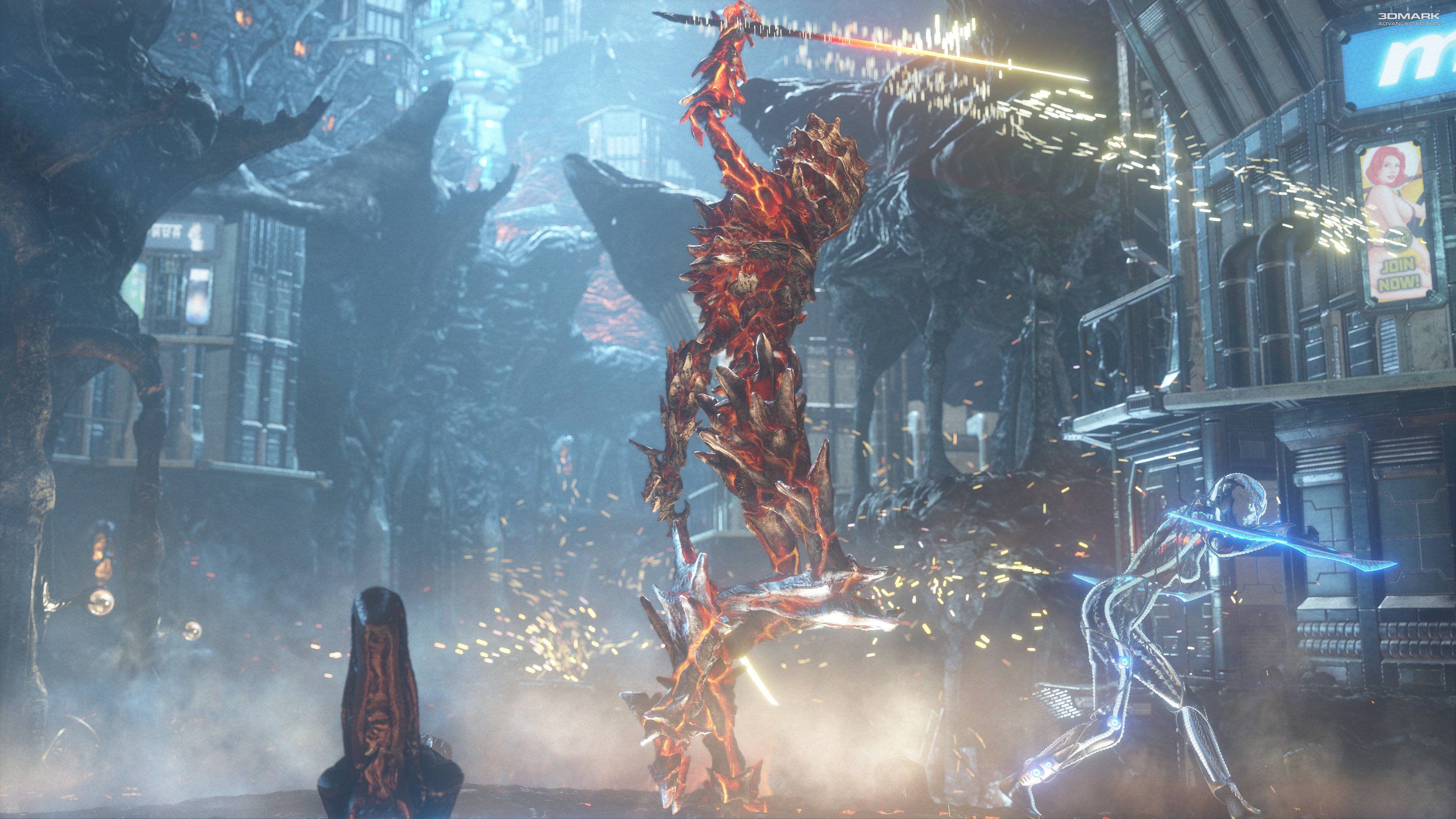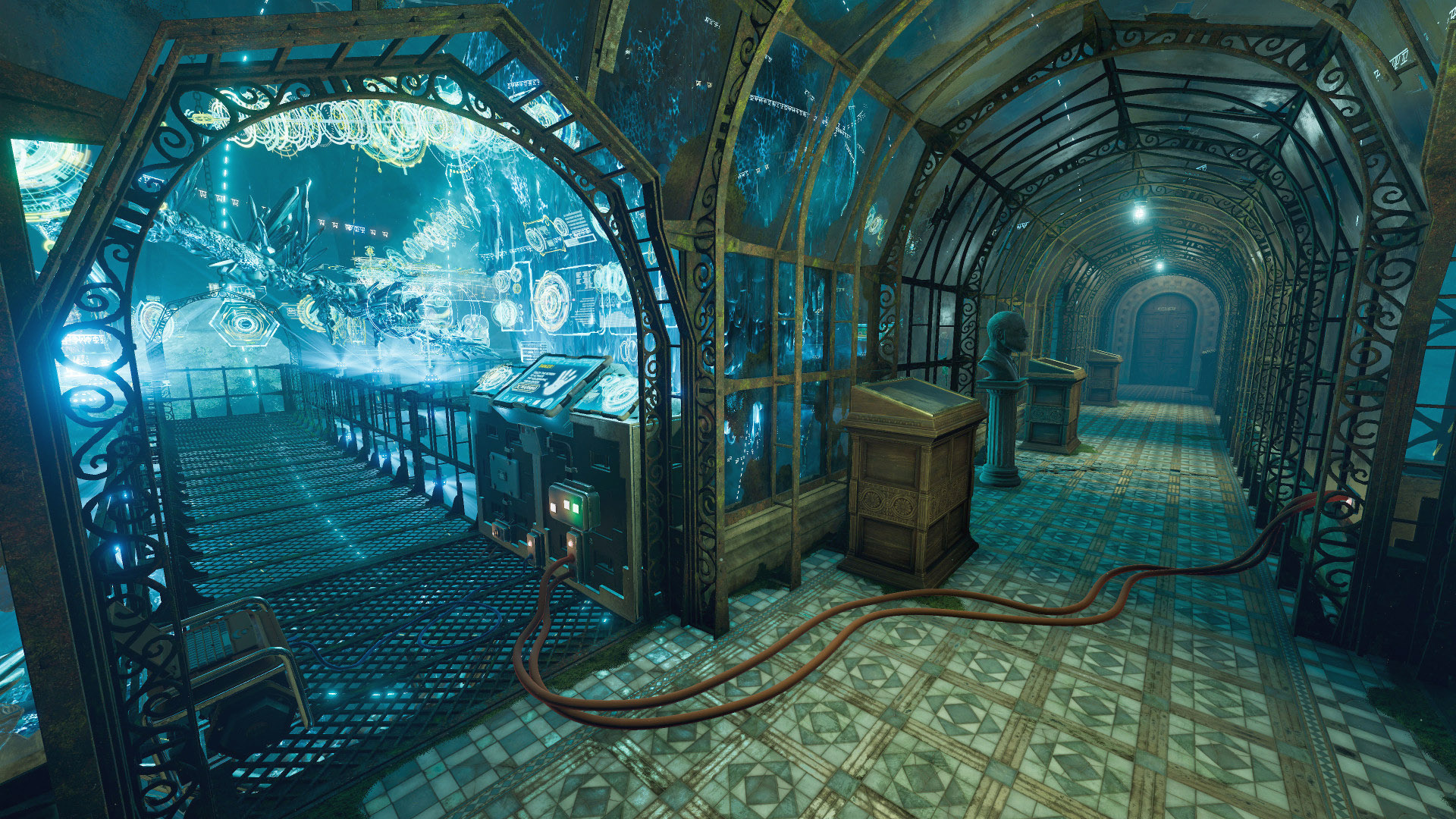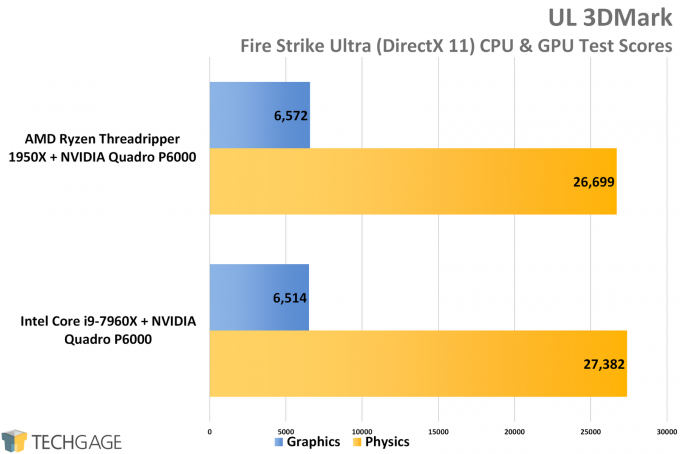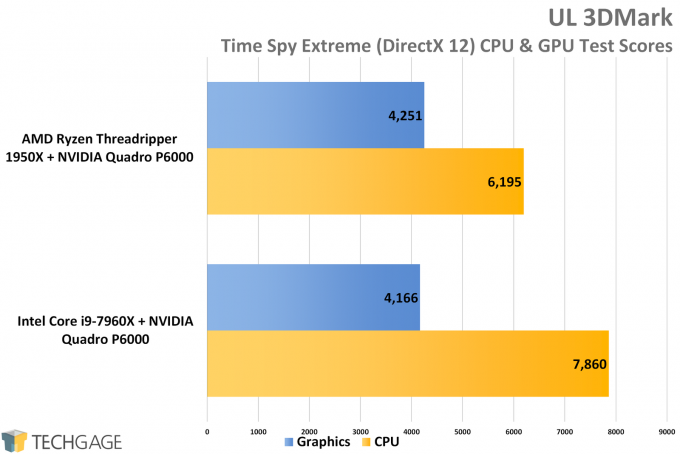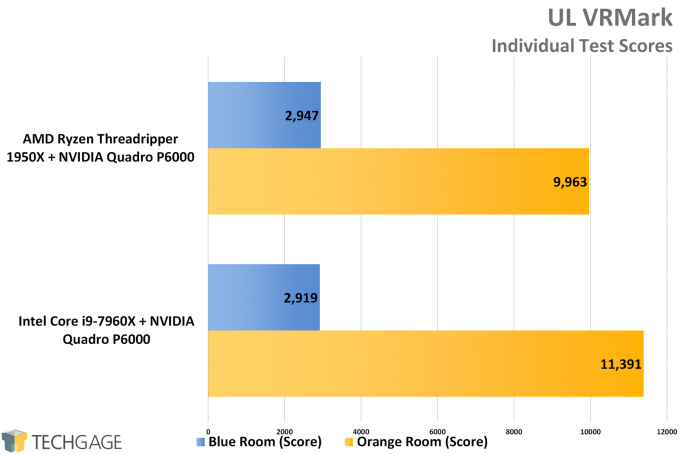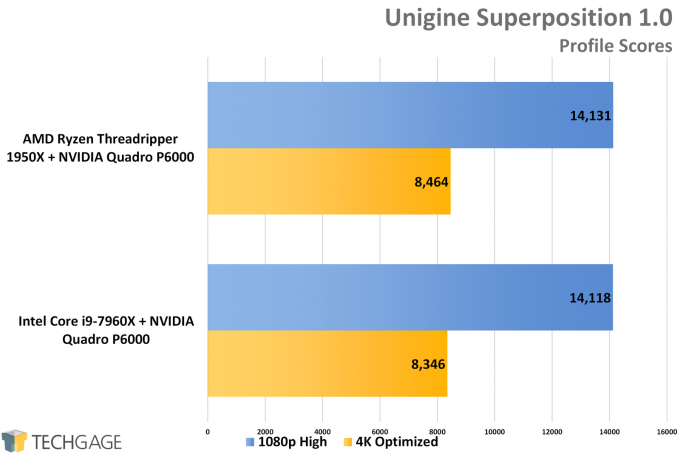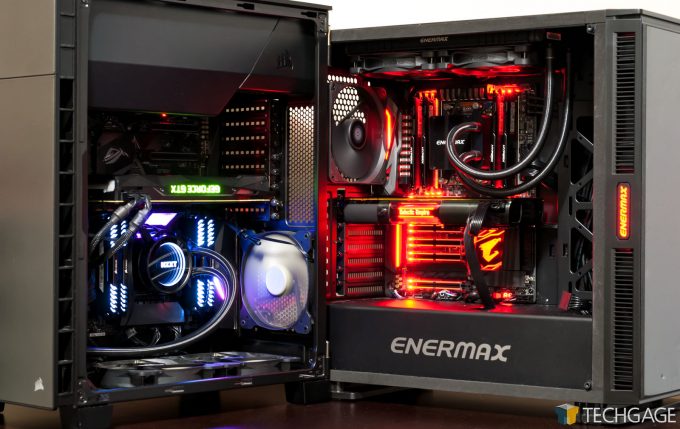- Qualcomm Launches Snapdragon 4 Gen 2 Mobile Platform
- AMD Launches Ryzen PRO 7000 Series Mobile & Desktop Platform
- Intel Launches Sleek Single-Slot Arc Pro A60 Workstation Graphics Card
- NVIDIA Announces Latest Ada Lovelace Additions: GeForce RTX 4060 Ti & RTX 4060
- Maxon Redshift With AMD Radeon GPU Rendering Support Now Available
Battle of the Workstations: AMD Ryzen Threadripper vs Intel Core X-Series
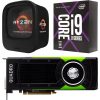
The workstation PC market got a shot in the arm last fall when AMD launched its Ryzen Threadripper platform, offering a 16-core CPU for a reasonable price. That led many to ponder what should be in their next machine. Join us as we pit comparable AMD and Intel machines against each other in over twenty workstation scenarios.
Page 3 – AMD vs Intel Workstation: Encoding, Linux & Gaming Performance
On the previous pages, we covered what I’d consider to be the most important types of performance: viewport and rendering. That’s not to say that other types of workstation scenarios can’t draw similar gains and drops, but those particular workloads have an insatiable appetite for more horsepower. That’s especially the case with rendering. Our current CPUs and GPUs are easily bogged down with any one of the tested projects, and fortunately, that means they should remain relevant for quite a while.
That all said, to help wrap our performance look up, we’re going to jump into media encoding, as well as take a trip to a penguin-populated land with some Linux tests, and wrap up with a quick look at gaming performance.
Encoding Applications
If you don’t encode with an application we test with, you’ll want to investigate exactly how it is your particular workloads use your hardware (using AIDA64, HWINFO, etc). In some cases, the GPU may not be touched much at all, while in others, it could make a dramatic improvement to the encode times. That’s mostly going to be true if you’re encoding with very high-resolution media, or make heavy use of GPU-accelerated effects.
For this testing, Adobe’s Premiere Pro and MAGIX’s Vegas Pro was relied-upon. These are only two apps, but they’re market-leading video editing suites that can scale quite noticeably on different hardware. We’re in the process of evaluating other video editors to add to our testing suite, with Capture One and DaVinci Resolve topping the to-do list.
To give some background to this test, all three of the projects were configured to use CUDA, which employs the use of both the CPU and GPU. In the end, the picture that’s painted here is one that puts AMD a fair bit behind Intel in all but the 4K test HEVC test – which is actually great considering Intel’s typical H.265 prowess.
Overall, considering the fact that the GPU was utilized to the same degree, and Intel still came quite a bit ahead in the H.264 tests, the company claims a definite lead here.
Both of the MAGIX Vegas tests are HEVC, and so the fact that both platforms perform just about the same isn’t much of a surprise based on the HEVC result in the previous Premiere Pro test. For HEVC, AMD is on par with Intel. For H.264, Intel dominates.
Linux Applications
Since this article is acting as a general performance outlook for AMD and Intel workstations, there wasn’t a great need to run our usual onslaught of Linux tests. I did want to run some for a bit of a sanity check, however, just to see how things are faring on the other side of the OS pond.
For testing, an updated Ubuntu 18.04 was used as the base, along with the 390 version Quadro driver. No big configuration changes were needed, but before all testing takes place, it’s ensured that the performance power profile is enforced (in /sys/devices/system/cpu/cpu*/cpufreq/scaling_governor).
All four of the above tests use the CPU exclusively for processing, and that becomes evident in the results with Intel taking a clean lead in every one of the tests. Note that higher results are better for the 7-zip and OpenSSL tests, while lower is better for the compilation and C-Ray test. It might have the smallest bar above, but the OpenSSL test shows the greatest performance lead of them all for Intel.
You might recall (and if not, don’t stress) that on the previous page, AMD managed to render the Pavillion project in 385 seconds regardless of whether it was rendered with the CPU or GPU. When testing the same application in Linux, further interesting results can be seen. On the AMD side, the once jointed results have become disjointed, and the GPU render again sees equal results on both platforms.
What’s intriguing here is the fact that this project rendered faster in Linux than it did in Windows, and not just with either the CPU or GPU rendering, but both. 385s on the GPU render becomes 372s, and 385s on the AMD CPU render becomes 336s. Meanwhile, Intel’s CPU render drops from 366s to an impressive 298s.
Gaming
Most people don’t have gaming in mind when they’re looking to buy or build a new PC to get design work done on, but the fact of the matter is, workstation gear can game just as well as the gaming counterparts. You might lack some per-game optimizations, but that comes at the gain of optimized workstation workloads. But, truly great gaming performance on workstation cards doesn’t come cheap.
Overall, AMD’s gaming performance isn’t quite up to snuff with Intel’s, but bear in mind that the biggest performance deltas occur at 1080p. If you’re planning to do gaming – or for that matter, workstation work – at 4K, the gap will be tightened.
Final Thoughts
Whoa… we’ve finally arrived. Allow me to reiterate a couple of things said at the outset. First, this is not meant to be an in-depth article, despite the number of benchmarks run. All of these results help paint an overall picture of performance on AMD’s and Intel’s respective platforms, but the data found here is by no means exhaustive. Thus, please don’t think this is meant to be a be-all and end-all article on the subject.
That being the case, there’s a lot of comparison that hasn’t taken place, such as which platform offers better memory bandwidth, latencies, et cetera. This article’s sole purpose was to take a general look at things, to see how things fare in the real-world. For this article, I didn’t want to bounce around specs, some of which might not even matter to most people. Those types of tests can often draw too much attention away from the tests that are actually important.
I’d say that both AMD’s Ryzen Threadripper and Intel’s Core X-series offer enough of what enthusiasts need, with what I’d believe would have to be an incredible few running against limitations. AMD can talk about its huge amount of PCIe lanes all day long, but I don’t personally believe most people will use even half of them. What people may want to use is ECC memory. AMD’s Ryzen Threadripper supports it. Intel’s Core X-series doesn’t. Whomp whomp.
If cost is a concern, then it’s also hard to ignore the value proposition AMD’s offering. Its Ryzen Threadripper 1950X launched last summer at $1000, but it can be found for much less lately. In advance of the Threadipper 2 launch, the 1950X currently sells for $700 at Amazon (it’s typically ~$850), which is downright incredible for the amount of horsepower it offers. Intel’s Core i9-7960X, by comparison, demands a much loftier $1,400.
Pricing aside, and unlike a gaming GPU review, there’s no way to easily draw a conclusion from the performance data here. What you want – and need – is going to depend on the performance of very specific scenarios. If you use SolidWorks day-in-and-day-out, for example, then most of the other results won’t matter. Again, it “pays to know your workload”.
Fortunately for enthusiasts, both platforms offer an incredible amount of performance. Especially when you compare them to what we had just a few years ago.
Support our efforts! With ad revenue at an all-time low for written websites, we're relying more than ever on reader support to help us continue putting so much effort into this type of content. You can support us by becoming a Patron, or by using our Amazon shopping affiliate links listed through our articles. Thanks for your support!




